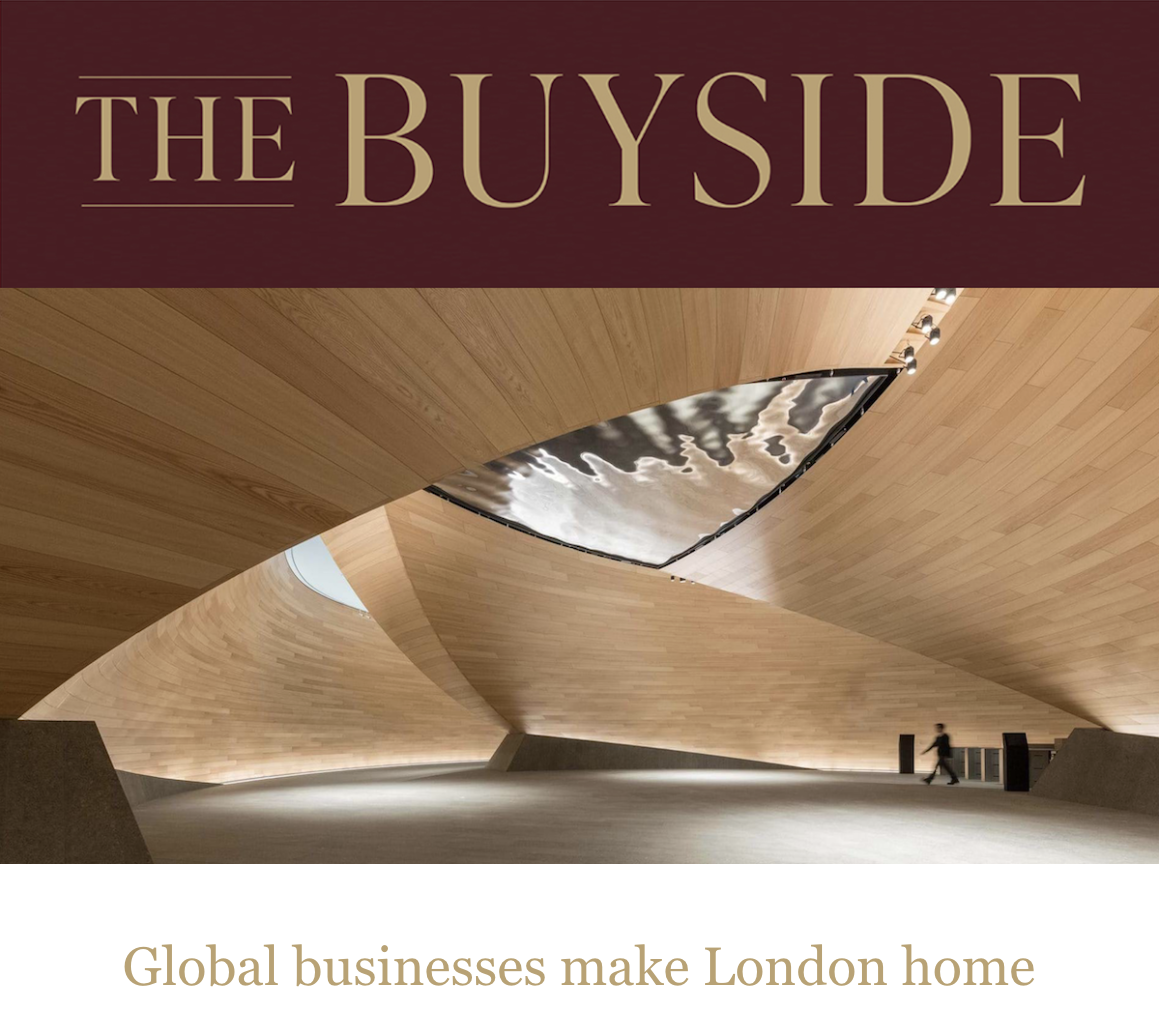
With the opening of tech giant Apple’s headquarters in Battersea Power Station early this year and Google’s new head office set to open in King’s Cross next year, we take a look at other significant headquarters across the capital. Spanning spheres of tech, finance, science, fashion and media, these global presences position the city as a leading player, infusing London’s vibrant streets with innovation and inspiration.
Apple
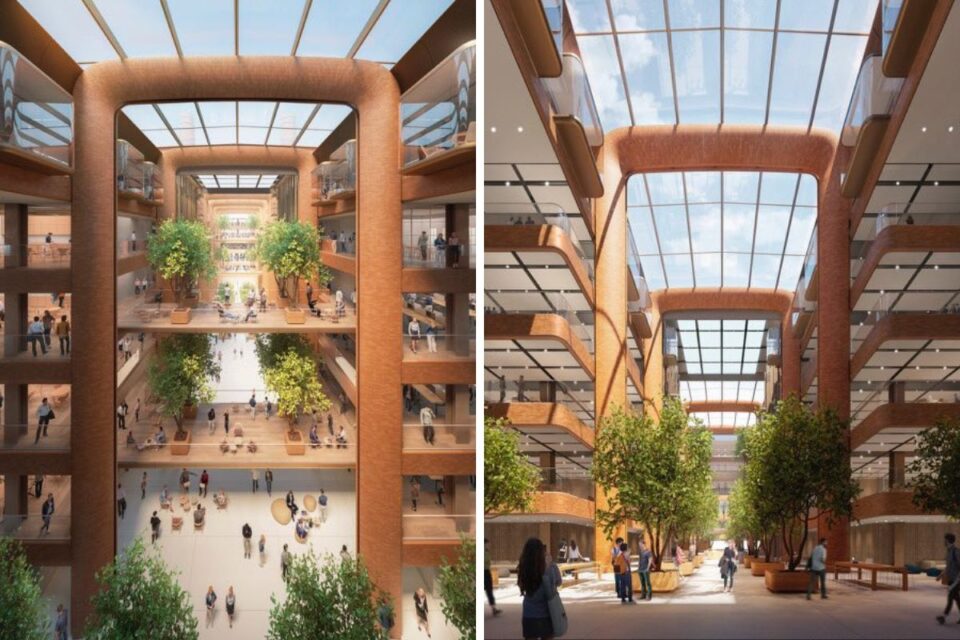
Designed by Foster + Partners, Apple’s office spans 46,000 square metres in Battersea Power Station, which re-opened in October 2022 after being decommissioned in the 1970s and subsequently sat empty for almost thirty years. Originally designed by architect Sir Giles Gilbert Scott in the 1930s, the Grade II* listed industrial building has now been extensively renovated by architecture studio Wilkinson Eyre to feature 100 shops and 254 apartments. Apple’s headquarters are spread across six floors linked by bridges and surrounded by a large glass-roofed atrium lined with trees, reports architecture and design publication Dezeen.
Brick-lined balconies will feature bricks hand-fired at the same quarry in Gloucestershire where the former coal-fired power station’s original bricks were made more than seventy years ago according to Apple, Dezeen states. Preservation specialists English Heritage have been involved to ensure the design remains sensitive to the existing architecture. The presence of this tech giant within a historic London landmark demonstrates the regenerative nature of London as a tapestry connecting old with new, blending the past and the future which ultimately underpins London’s unique charm.
Meanwhile, set to tower over King’s Cross and St Pancras railway stations, fellow tech-force Google’s new headquarters are due to open in 2024. The 11-storey London based hub will be the first Google-owned and designed building outside the USA. Designed by Thomas Heatherwick and Danish architect Bjarke Ingels, the vast horizontal skyscraper – nicknamed the ‘landscraper’ – will stretch to 330m, which is longer than the Shard is tall. “This project represents a real vote of confidence in London, in our communities and in our flourishing tech sector,” Sadiq Khan added.
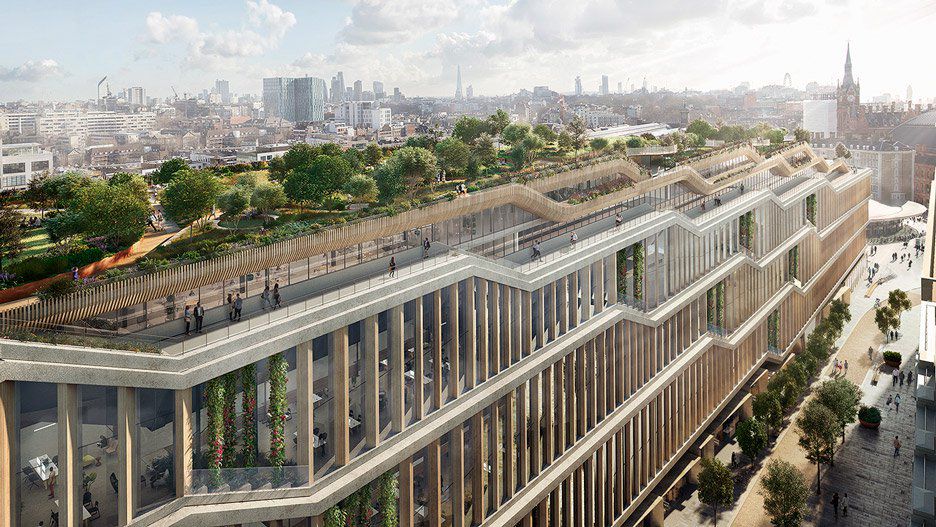
It will include a 25-metre swimming pool and multi-use games area where Google employees can play basketball, football or tennis, with plans to plant 250 trees on the rooftop garden. Four fifths of the building will be hung from a steel frame, creating an open plan environment, whilst a single continuous staircase will snake from the ground floor to the top, designed to spark interaction between employees. Ground floor retail units will be rented out to emerging British brands. In January, Google also announced the purchase of a second London site for its employees: the vividly coloured Central Saint Giles development designed by architect Renzo Piano, which the company had previously been renting.
Burberry
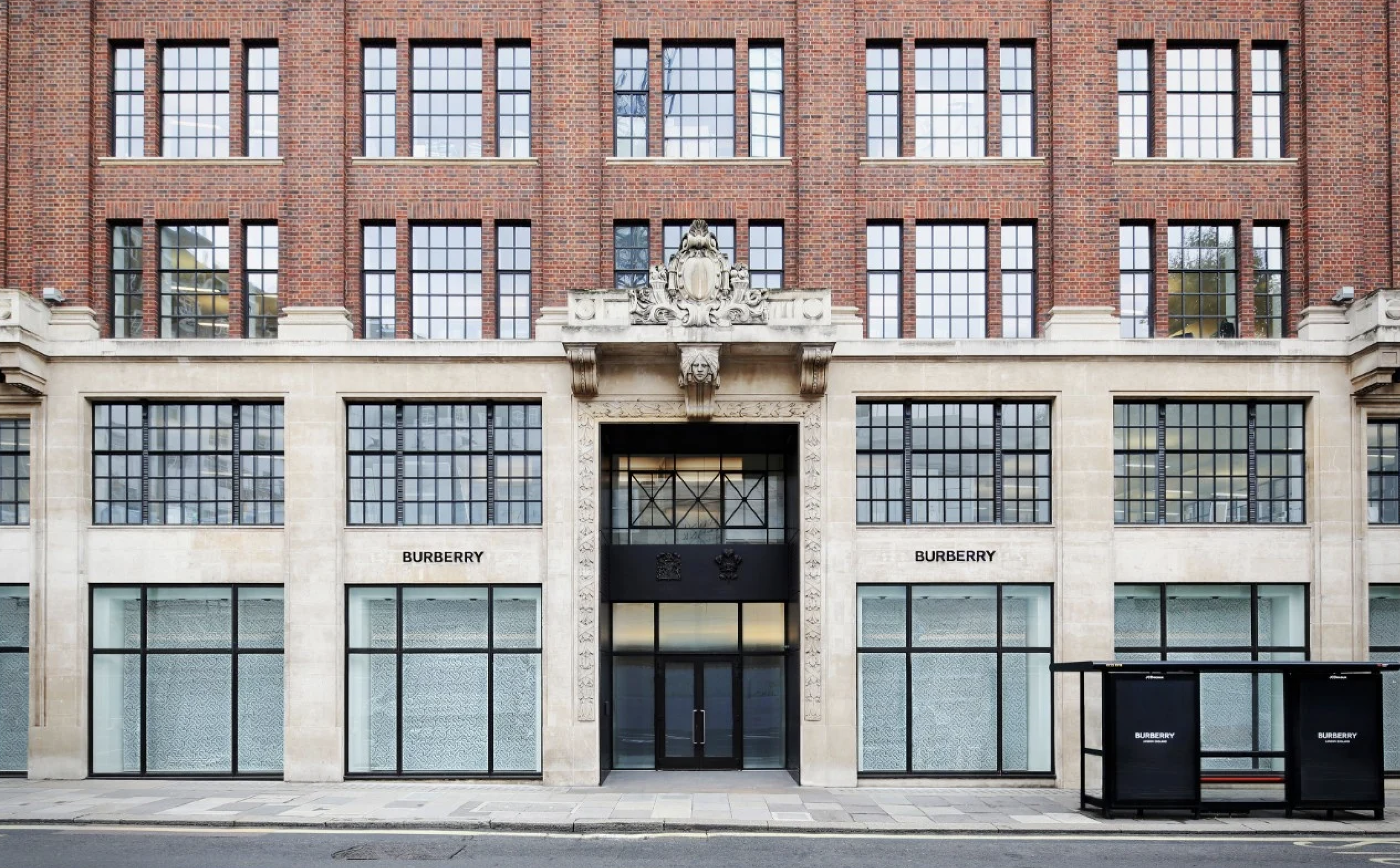
These two new additions will join more well-established forces within London’s hive of headquarters. Already ensconced and thriving in the capital, Burberry’s global headquarters are the company’s central hub for the entire global organisation. Located moments from Tate Britain in Pimlico, Horseferry House, which was originally a government building when it was constructed in 1910, consolidates the fashion titan’s five offices into one workplace, comprising design and photo studios, showrooms and workspaces. Burberry’s first store opened in London in 1891 at 30 Haymarket, so the placement of its headquarters in Pimlico is a fitting continuation of the brand’s London identity. Beyond its London’s headquarters, the global breadth of Burberry’s corporate offices span Hong Kong, Paris, Dubai, Shanghai, Milan, New York and Barcelona.
Bloomberg
Over in the City, Bloomberg’s European headquarters is the first building in the world to be designed and owned by the software and media company. The site, which opened in 2017, houses 4,000 London-based employees and is located near to St. Paul’s Cathedral, the Bank of England and St Stephen Walbrook’s domed church which was built by Christopher Wren in 1679. Conceived in collaboration with Foster + Partners – who are also responsible for Apple’s London-based hub – the 3.2-acre site comprises two buildings in sandstone, making it the largest stone project in the City of London for a century, Bloomberg reported. The headquarters were awarded the prestigious 2018 RIBA Sterling Prize for Architecture. Of the award, RIBA President Ben Derbyshire said: “After vigorous debate, the jury reached a unanimous decision – Bloomberg’s new European HQ is a monumental achievement.”
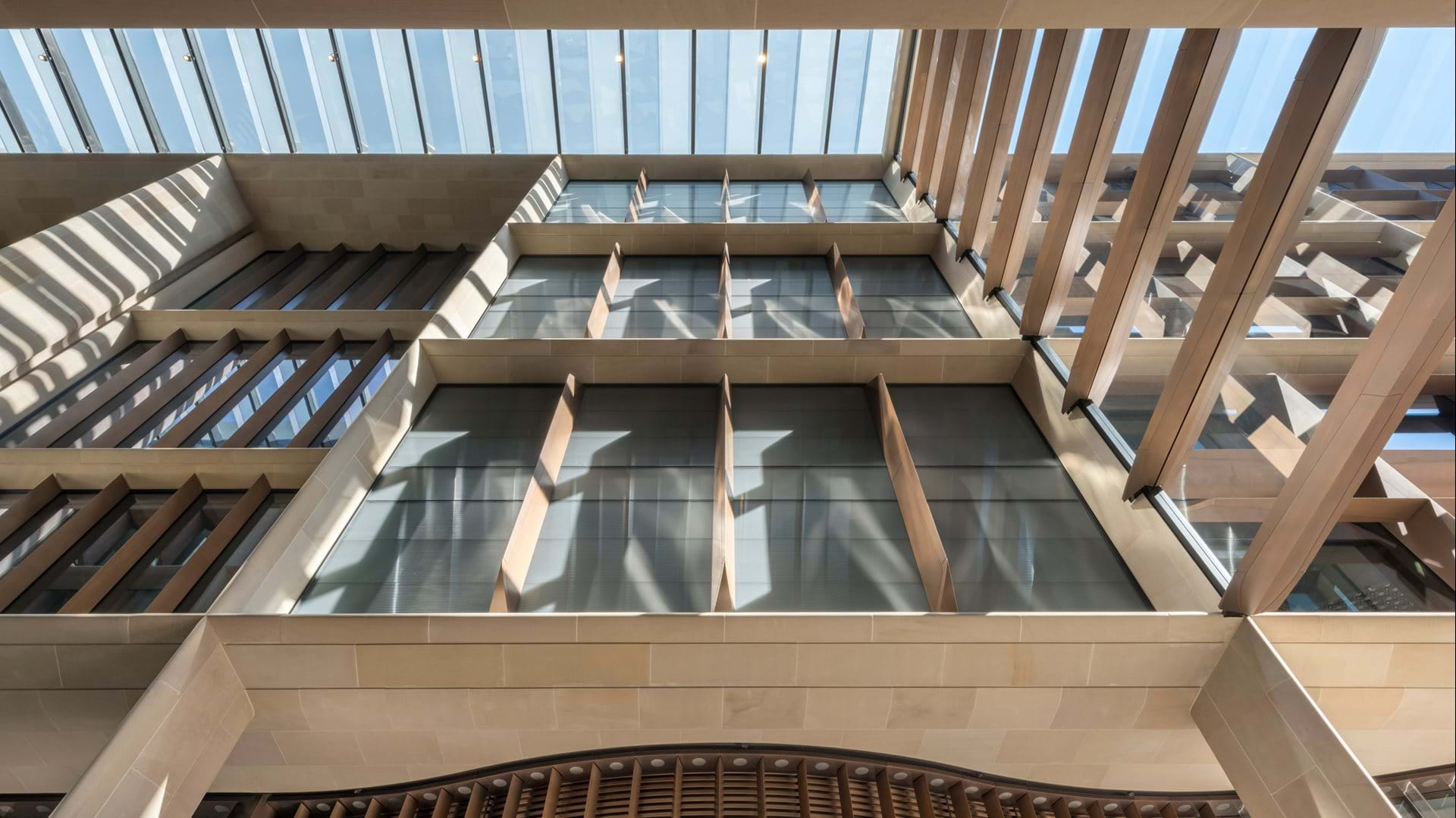
The two buildings are conjoined by bridges across a pedestrian arcade which reinstates Watling Street, an ancient Roman road that once ran through the site. It now comprises restaurants and cafes, making it a destination thoroughfare for people moving around the City. Once the heart of Roman London’s commercial centre, the headquarters are located on one of the UK’s most significant archaeological sites – the ancient Temple of Mithras, a Roman Mithraeum discovered in Walbrook, a street in the City of London. Importantly, Bloomberg’s building returns the archaeological remains of the Roman Temple of Mithras to the site of their original discovery, whilst eight contemporary site-specific art commissions including a water sculpture also play a central role at Bloomberg’s base.
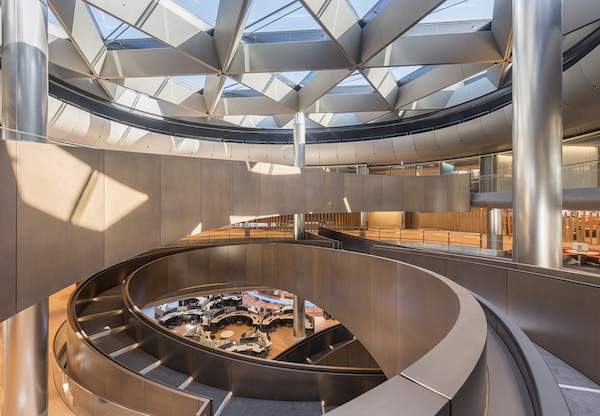
This burgeoning blend of tech, creative, science and media headquarters across London positions the city as a principal player on a global platform. The success of these sprawling sites is ultimately dependent on the prowess of the people working within them, who inject international talent and brilliance, in turn propelling London’s innovation, creativity and inventiveness. The presence of these workplaces to house and breed ideas and inspiration whilst remaining sensitively sculpted within the historic tapestry of London, foregrounds the ever-evolving and progressive nature of the city, intellectually, economically and architecturally.
We are fortunate that London generates such a wealth of talent through these exemplary enterprises. With London as RFR’s Headquarters, we thrive working within this energising and dynamic network of talented entrepreneurs and creatives who spearhead such visionary developments across a breadth of sectors.
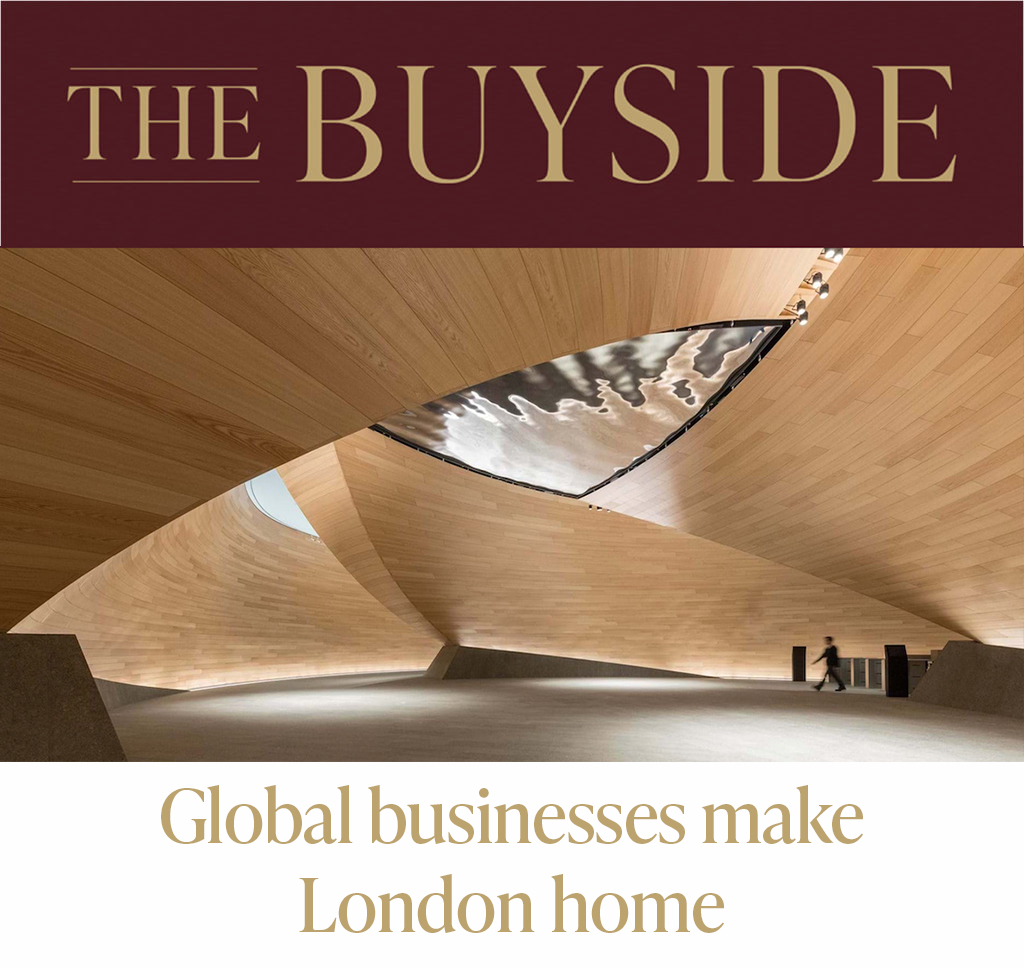
With the opening of tech giant Apple’s headquarters in Battersea Power Station early this year and Google’s new head office set to open in King’s Cross next year, we take a look at other significant headquarters across the capital. Spanning spheres of tech, finance, science, fashion and media, these global presences position the city as a leading player, infusing London’s vibrant streets with innovation and inspiration.
Apple

Designed by Foster + Partners, Apple’s office spans 46,000 square metres in Battersea Power Station, which re-opened in October 2022 after being decommissioned in the 1970s and subsequently sat empty for almost thirty years. Originally designed by architect Sir Giles Gilbert Scott in the 1930s, the Grade II* listed industrial building has now been extensively renovated by architecture studio Wilkinson Eyre to feature 100 shops and 254 apartments. Apple’s headquarters are spread across six floors linked by bridges and surrounded by a large glass-roofed atrium lined with trees, reports architecture and design publication Dezeen.
Brick-lined balconies will feature bricks hand-fired at the same quarry in Gloucestershire where the former coal-fired power station’s original bricks were made more than seventy years ago according to Apple, Dezeen states. Preservation specialists English Heritage have been involved to ensure the design remains sensitive to the existing architecture. The presence of this tech giant within a historic London landmark demonstrates the regenerative nature of London as a tapestry connecting old with new, blending the past and the future which ultimately underpins London’s unique charm.
Meanwhile, set to tower over King’s Cross and St Pancras railway stations, fellow tech-force Google’s new headquarters are due to open in 2024. The 11-storey London based hub will be the first Google-owned and designed building outside the USA. Designed by Thomas Heatherwick and Danish architect Bjarke Ingels, the vast horizontal skyscraper – nicknamed the ‘landscraper’ – will stretch to 330m, which is longer than the Shard is tall. “This project represents a real vote of confidence in London, in our communities and in our flourishing tech sector,” Sadiq Khan added.

It will include a 25-metre swimming pool and multi-use games area where Google employees can play basketball, football or tennis, with plans to plant 250 trees on the rooftop garden. Four fifths of the building will be hung from a steel frame, creating an open plan environment, whilst a single continuous staircase will snake from the ground floor to the top, designed to spark interaction between employees. Ground floor retail units will be rented out to emerging British brands. In January, Google also announced the purchase of a second London site for its employees: the vividly coloured Central Saint Giles development designed by architect Renzo Piano, which the company had previously been renting.
Burberry

These two new additions will join more well-established forces within London’s hive of headquarters. Already ensconced and thriving in the capital, Burberry’s global headquarters are the company’s central hub for the entire global organisation. Located moments from Tate Britain in Pimlico, Horseferry House, which was originally a government building when it was constructed in 1910, consolidates the fashion titan’s five offices into one workplace, comprising design and photo studios, showrooms and workspaces. Burberry’s first store opened in London in 1891 at 30 Haymarket, so the placement of its headquarters in Pimlico is a fitting continuation of the brand’s London identity. Beyond its London’s headquarters, the global breadth of Burberry’s corporate offices span Hong Kong, Paris, Dubai, Shanghai, Milan, New York and Barcelona.
Bloomberg
Over in the City, Bloomberg’s European headquarters is the first building in the world to be designed and owned by the software and media company. The site, which opened in 2017, houses 4,000 London-based employees and is located near to St. Paul’s Cathedral, the Bank of England and St Stephen Walbrook’s domed church which was built by Christopher Wren in 1679. Conceived in collaboration with Foster + Partners – who are also responsible for Apple’s London-based hub – the 3.2-acre site comprises two buildings in sandstone, making it the largest stone project in the City of London for a century, Bloomberg reported. The headquarters were awarded the prestigious 2018 RIBA Sterling Prize for Architecture. Of the award, RIBA President Ben Derbyshire said: “After vigorous debate, the jury reached a unanimous decision – Bloomberg’s new European HQ is a monumental achievement.”

The two buildings are conjoined by bridges across a pedestrian arcade which reinstates Watling Street, an ancient Roman road that once ran through the site. It now comprises restaurants and cafes, making it a destination thoroughfare for people moving around the City. Once the heart of Roman London’s commercial centre, the headquarters are located on one of the UK’s most significant archaeological sites – the ancient Temple of Mithras, a Roman Mithraeum discovered in Walbrook, a street in the City of London. Importantly, Bloomberg’s building returns the archaeological remains of the Roman Temple of Mithras to the site of their original discovery, whilst eight contemporary site-specific art commissions including a water sculpture also play a central role at Bloomberg’s base.

This burgeoning blend of tech, creative, science and media headquarters across London positions the city as a principal player on a global platform. The success of these sprawling sites is ultimately dependent on the prowess of the people working within them, who inject international talent and brilliance, in turn propelling London’s innovation, creativity and inventiveness. The presence of these workplaces to house and breed ideas and inspiration whilst remaining sensitively sculpted within the historic tapestry of London, foregrounds the ever-evolving and progressive nature of the city, intellectually, economically and architecturally.
We are fortunate that London generates such a wealth of talent through these exemplary enterprises. With London as RFR’s Headquarters, we thrive working within this energising and dynamic network of talented entrepreneurs and creatives who spearhead such visionary developments across a breadth of sectors.

